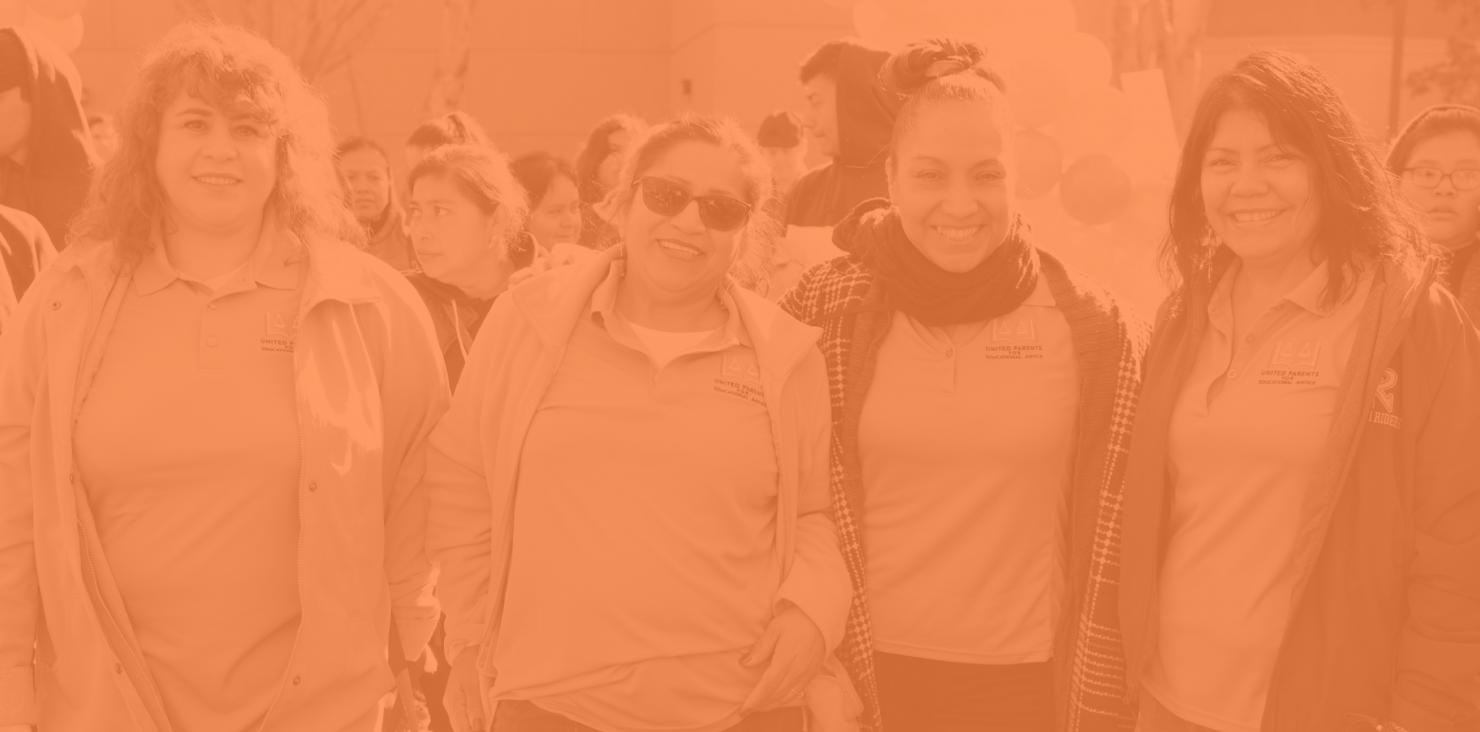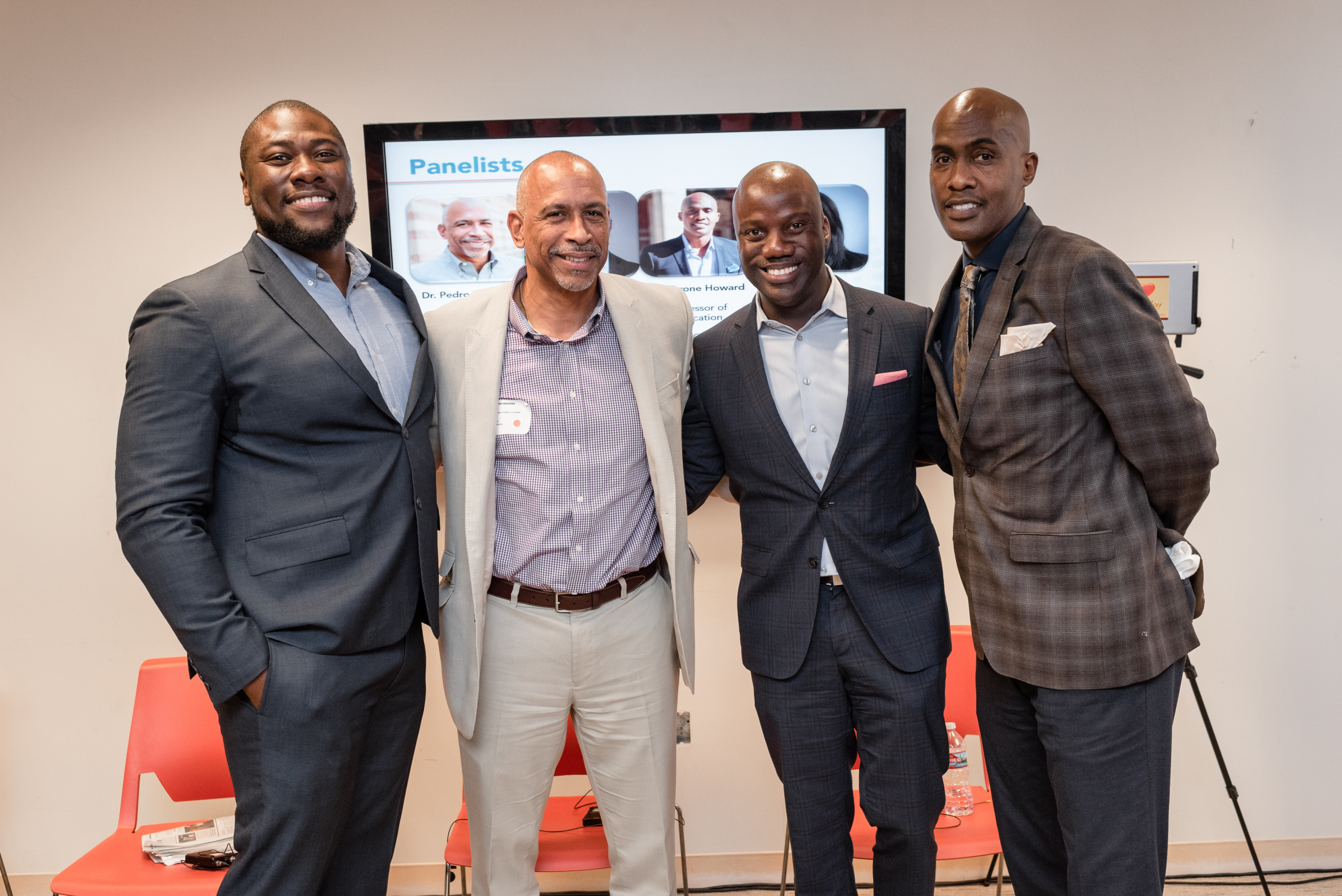
Advocacy
inside our Practice
We intentionally work in and around schools to change policies and systems that have historically placed barriers on the most vulnerable students in the public school system.
In Los Angeles, we join a unique and deep legacy of organizers and advocates who have been pushing for decades on the broader district to change since its founding.

“For meaningful, sustainable change to happen, we have to understand the needs; collaborate with partners to build on and enhance existing assets; and, recognizing that inequities create barriers to student learning, make systemic changes to remove those impediments.”Carolyn Webb de MaciasBoard Chair

What Sets the Partnership Approach Apart
As an in-district partner, we are uniquely positioned to recognize and identify potential solutions to systemic challenges that adversely impact schools in high-need communities. We leverage our access and influence through relationships with District leaders to elevate issues we see impacting our network. As an independent non-profit, we are well-positioned to effectively advocate for systems change that would address these issues. Our in-district partner position allows us to push the system in a way that departments within a large district or external organizations lacking access cannot do effectively. We also leverage our position as informed practitioners to help launch and actively participate in coalitions with community-based organizations and partners to push together for change.
We bring to bear the benefits of a school system, independent non-profit, and policy & advocacy organization in our level of access and ability to stay engaged with the lived experiences of policy change. We work side-by-side with school leaders to remove barriers that interfere with their ability to successfully manage their school and ensure outcomes for students. Over time, these efforts inform our advocacy to the District which focuses on solutions at scale, and allow us to achieve significant improvements to the broader school system. And because our systems change efforts are the result of what we see in classrooms and across our schools, we are able to monitor policy implementation once change occurs and make improvements that accelerate school-level successes in a virtuous cycle.
Our Policy Briefs
The research, analysis and recommendations within these briefs are an outgrowth of what we have heard and experienced alongside the school leaders, teachers and parents in our communities. The briefs inform and influence district and community leaders as we all work toward a more equitable system.
How We Influence Change
We leverage our status and position within the District to help draw attention to critical issues that prevent students in high-need schools from gaining equitable access to a high-quality education. We have pursued systemic change using several strategies that vary in approach and public visibility:
- Relationship building and communication with District staff and board members
- Pilot programs to test innovative solutions
- Direct advocacy to District leadership and board members to illuminate policies that impede student success
- Impact litigation to challenge laws and policies that create inequities
- Coalition-building with community partners
- Implementation advocacy to ensure district follow-through
- Parent advocacy campaigns
- Thought leadership & influence
How We Measure Success
As a network, we measure the success of our systems change work based on movement along a rubric of implementation for broad policies and practices for which we’ve advocated. We know that changing systems is never an open-and-shut project, but requires persistent focus on multiple variables and stages of implementation in order to lead to lasting change. At the same time, we believe in celebrating milestones and short-term wins as important momentum builders: when we move from one stage to another on a given policy or practice, we count it as a win for that school year. While our full rubric continues to evolve, we currently consider three key factors to assess our successes yearly and across years:
- Level of Implementation
- Support for Change and Sustainability
- Scale of Impact
critical systems for school transformation
With our intense focus on the experience of our network schools, we partner with LA Unified to change and improve policies and systemic practices to accelerate equity.
In our experience, the default approach of school districts is to design rules and policies that treat all schools the same and can be enforced with compliance. While this approach works in many areas, we’ve found that district policies and systems often impede school transformation and fall short of the support that under-resourced communities deserve. This is particularly true in the areas of funding, staffing, enrollment, data and professional development.
Funding
While our sector wrestles with inadequate funding across the board, we believe the primary issue is equity. With all the challenges facing low-income students of color, spreading limited funding equally across schools is not acceptable. Instead, we need intentional investment where the need is greatest. We also need to allocate funding to school sites in a way that gives school communities the flexibility and the stability of funds to decide how to invest resources for multiple years to meet the specific needs of the community. Toward this end, we advocate on behalf of school leaders to ensure that every available dollar that could, and should, be directed to meeting the needs of our students is allocated appropriately. And we’ve scaled this work to pursue equitable funding for all high-need schools across Los Angeles, resulting in the creation of a Student Equity Needs Index that is being used to allocate funding based on need.
Staffing
Talent is not distributed equitably across schools. Instead, high-need schools struggle to attract and retain the most qualified and experienced teachers. There is much that schools can do to improve the situation, but this is fundamentally a system problem. Absent intentional supports and strategy from the district, high-need schools suffer the highest turnover, the most vacancies, and the most limited hiring pools. We have worked with LA Unified to increase hiring flexibility, improve pipelines and increase support for teachers in high-need schools.
Enrollment
In our experience, school systems sort students into different opportunity tracks at a very young age. Believing as we do that talent is distributed without regard to race, class, disability, language background or zip code, it is essential that we design our enrollment systems to ensure that all students have access to high-quality educational experiences. This means examining the enrollment data for patterns of segregated opportunity and redesigning systems to expand opportunity for the most vulnerable students. We have worked with LA Unified to make gifted testing universal, simplify enrollment systems and expand opportunities in under-resourced communities.
Leadership Development
Leadership is critical to school transformation, but in our experience districts under-invest in strong systems for leadership development. Professional development and coaching for administrators and teacher leaders is often insufficient. It lacks coherence and fails to focus on the most important work for school transformation: building strong instructional systems. We have worked with LA Unified to develop and share our best practices for leadership development and to free up school leaders from other meetings and trainings that can distract from their core work.
Curriculum
In order to provide high quality instruction, teachers and administrators need the most effective and standards-aligned instructional materials, as well as the time to learn and teach new curriculum effectively. The impact of switching to a top-tier curriculum is comparable to providing over half a year of additional learning for a student, which is one of the most effective interventions available – greater than the impact of class size reduction, mentoring, computer-aided instruction, or many other strategies. Moreover, unlike other school improvement strategies, improved curriculum adoption and implementation can be done more quickly at scale. Despite these advantages, our experience is that many districts stick with outdated and inferior materials for too long, and that when new curriculum adoptions do occur, teachers are not supported to implement them well. We have worked with LA Unified to adopt higher-quality curricula in our schools, and to set up better systems to ensure that high-need schools have access to the instructional materials they deserve.
Data Systems
Districts have a tremendous amount of data, but many struggle to make it useful and accessible for teachers, families and students. In our experience, data can be powerful when understood and used by all school stakeholders to pursue school transformation and student success. We have worked with LA Unified to create teacher data portals, school report cards, and student-level college reports cards which can guide students to college readiness.
our impact
In the 2019-2020 school year, our continued advocacy on this issue in coalition with key partners such as Community Coalition, Inner City Struggle, and the Advancement Project resulted in a re-allocation of $280 million into the District’s new equity-based funding formula.

